| Garmin STRIKER Cast | Lowrance FishHunter 3D | Lucky FF1108-T | Deeper CHIRP 2 | ReelSonar iBobber |
|---|---|---|---|---|
Editors Choice
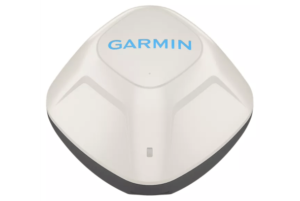 |
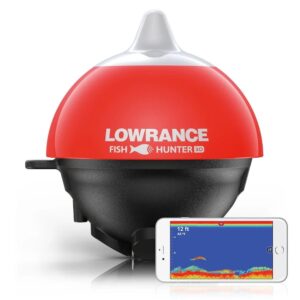 |
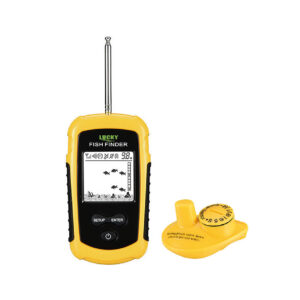 |
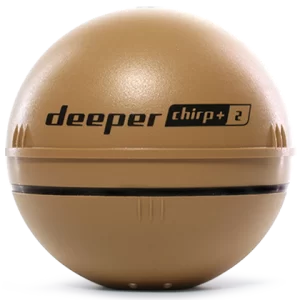 |
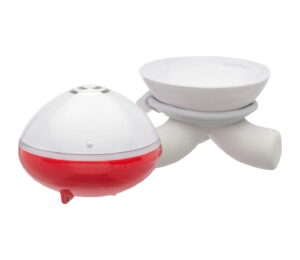 |
| Frequency: 260/455 kHz | Frequency: 381kHz, 475kHz and 675 kHz | Frequency: 200 kHz | Frequency: Three-Frequency CHIRP | Frequency: 119 kHz |
| GPS: Interal, High Precision | GPS: Inernal, High-precision | GPS: N/A | GPS: In-App | GPS: N/A |
| Transducer: N/A | Transducer: N/A | Transducer: Sonar | Transducer: N/A | Transducer: N/A |
| Transmit Power: N/A | Transmit Power: N/A | Transmit Power: N/A | Transmit Power: N/A | Transmit Power: N/A |
| Screen: N/A | Screen: N/A | Screen: N/A | Screen: N/A | Screen: N/A |
| Screen Size: N/A | Screen Size: N/A | Screen Size: 2.4 in | Screen Size: N/A | Screen Size: N/A |
| Resolution: N/A | Resolution: N/A | Resolution: N/A | Resolution: N/A | Resolution: N/A |
| Backlit: N/A | Backlit: N/A | Backlit: Yes | Backlit: N/A | Backlit: N/A |
| Imaging: N/A | Imaging: N/A | Imaging: Black and white | Imaging: N/A | Imaging: N/A |
| Maps Included: N/A | Maps Included: N/A | Maps Included: N/A | Maps Included: In-App | Maps Included: N/A |
| Max Waypoints: N/A | Max Waypoints: N/A | Max Waypoints: N/A | Max Waypoints: N/A | Max Waypoints: N/A |
| Memory Card Slots: N/A | Memory Card Slots: N/A | Memory Card Slots: N/A | Memory Card Slots: N/A | Memory Card Slots: N/A |
| Best Price (Amazon) Best Price (Bass Pro) | Best Price (Amazon) | Best Price (Amazon) Best Price (Bass Pro) |
The best castable fish finder of 2022
When we started our research, we expected quite a close contest. We were wrong. The Deeper Sonar CHIRP+ 2 is by far and away the best castable fish finder available on the market.
Let’s start with its range. You’ll almost never cast the unit to the limit of its max range of 394 feet. As we all know, however, Wi-Fi can be a bit unreliable, so having a strong signal is a boon, even if you never send it 300 feet away from your boat.
The depth of the unit is exceptional, too; you might only get 330 feet of depth in ideal conditions (and when using wide CHIRP), but even in poor conditions, the CHIRP+ 2 swims circles around the competition in terms of depth.
Our top pick also offers incredible target separation of 0.4” - that’s owing to CHIRP technology, something that’s almost impossible to find on castables. What’s more, Deeper equipped the unit with 3 different cones and frequencies. You can scout and look for bottom dwellers with the wide cone, refine your search with the mid cone, then switch to the narrow cone for ultra-precise fishing.
Then there’s the battery life - you can take this thing out on the water all day long, come back for supper, and have it charged and ready to go by the time you want to hit the water again. 15 hours of battery life with a 2-hour charge time is unprecedented in the world of castables - just like pretty much everything else about Deeper’s Sonar CHIRP+ 2.
Even the app is solid - you can create bathymetric maps or subscribe to purchase pre-made maps. You can set waypoints, log catches, and more. We’re incredibly impressed with what Deeper has put together here, especially considering how young the company is.
The only disadvantage of the unit? It’s the priciest castable you’re likely to find on the market. As you can see, you get what you pay for, and if you’re an enthusiast who loves shore fishing or fishing in small boats, you can’t go wrong with Deeper’s CHIRP+ 2.
The runner-up
Something we’ve always loved about Garmin products is their ease-of-use. Garmin is a big company - they make wearables, automotive products, and a whole lot more. That experience has enabled them to create some of the best user interfaces in the fish-finding game, and the STRIKER Cast is no exception.
Setting this unit up takes only three steps. The unit is equipped with Garmin’s Quickdraw, one of the best contour mapping softwares you can find. You can swap to fish icons if you don’t like fish arches or even flasher mode if you’re looking to do a little ice fishing. Simple and elegant design is the biggest draw for this unit.
And while it’s not as powerful as our top pick, it’s no slouch either. A 10-hour battery life with a 90-minute charge time means the STRIKER Cast will last out on the water as long as you do - especially since the unit automatically powers off when you take it out of the water.
You get two different frequencies on the unit - use the 455 Hz for more precision and the 260 for a wider range and greater depth.
The unit is about a third of the price of our top pick, so if you love Garmin and you’re looking for a less expensive, extremely easy-to-use castable fish finder, the STRIKER Cast may be the model for you.
The best mid-cost castable
We don’t want to bury the lede: The thing we love the most about this unit is the price. It’s one of Lowrance’s least expensive fish finders, bar none. And despite its low price, it packs quite a punch.
While it doesn’t have CHIRP sonar, the FishHunter 3D does have five transducers. This allows you to find exactly where fish are in relation to your fish finder (in front, in behind, to the left, to the right, or directly below).
The FishHunter 3D also offers a variety of different 3D views. You can use the 3D Fishing and 3D Structure Map view to generate detailed images of bottom contour and find the best fishing spots. These maps are color-coded, easy to read, and even feature fish icons so you can know where fish are in relation to structure.
Another lovely feature is the LED light. It acts as a battery indicator and enables you to fish with the FishHunter 3D in low-light conditions, so you can start in the morning, stay out all day, come back for supper, then fish until after dusk.
The specs on this unit aren’t anything to sneeze at, either. With three different frequencies, you can scout for fish using wider angles, then switch to higher frequencies for more precise fishing once you’ve found the perfect spot.
The only real disadvantage of the unit is its overall weight. While some might complain about how long it takes to charge the battery, we’ve never had a problem - the unit has a battery life of 10 hours. You’d be hard-pressed to find a better unit for this price.
The best Bluetooth Castable
“Love” might be a bit of an exaggeration - in most circumstances, we’d opt for the Lowrance FishHunter 3D if we wanted a castable at this price range. The iBobber does have one thing going for it, though - it’s one of the only Bluetooth castables on the market.
There’s a pretty good reason for that: Bluetooth isn’t as reliable for long-distance wireless connections as Wi-Fi. If, however, you can’t connect via Wi-Fi for whatever reason, the iBobber is the best unit you can get.
While Bluetooth is the unit’s main draw, it does have some pretty decent features. The unit comes jam-packed with fish alarms, trip logs, and more. You also get the contour mapping features that come standard with most castables.
That’s all pretty incredible, considering how small the unit is. If you’re looking for something extremely lightweight, or something that connects via Bluetooth, the ReelSonar iBobber might be the perfect castable fish finder for you!
Most affordable "castable"
Some people don’t need mapping technology, multiple views, and carefully designed apps. Some people just want to fish off the shore. Want an extremely cheap fish finder that you can use in a pinch? The Lucky FF1108-T is the fish finder for you.
This is a wired fish finder that uses 4x AAA batteries - so it’s rechargeable if you get rechargeable AAAs. For this reason, it’s a bit strange to find in this category. Why do we call it a castable? You can’t actually cast it out on a line, so what gives?
There are two reasons the Lucky found its spot on our list. The first is that it can be used in many of the scenarios where you’d want a castable fish finder - most notably, when you’re fishing from the shore. You see, the wired connection connects directly to the unit, and then you throw the transducer into the water.
The second reason is that we wanted to offer a cheap, reliable fish finder that you can use without needing a phone - one that can be used when kayaking and when shore fishing. The Lucky fits the bill.
There’s not a lot going on here - fish icons, a depth detector, and a fish alarm. That’s all some folks need, though, and if that sounds like you, then the Lucky might just be your best bet.

Not all castable fish finders are made equally. We’ve got our opinions on the best castable fish finder, but you might want to do your own research. What sets different castables apart?
To develop our list of the best castables, we selected different criteria to evaluate each fish finder. To help you choose the right castable for yourself, we’ve created a list of these criteria: Performance and accuracy, range and depth, durability, ease of use, charging time and battery life, features, and compatibility. Let’s delve into each of those a bit deeper right now - using this information, you’re sure to find the perfect castable fish finder for your needs.
Performance is pretty subjective: Does the fish finder perform in line with your expectations (as well as what was advertised)? If you’re looking for a fish finder that meets those expectations, we usually recommend sticking with the big brands: Garmin, Lowrance, and Humminbird. Humminbird, unfortunately, doesn’t have a castable fish finder yet, but both Lowrance and Garmin have excellent models. We’ve also had great experiences with Deeper brand fish finders.
When it comes to accuracy, CHIRP is the word, and we highly recommend getting a castable with CHIRP capabilities. CHIRP offers better target separation and more accurate readings, thanks to its ability to transmit and receive multiple frequencies in a single pulse.
You’ll also want to select a castable that can emit a number of different frequencies, so you can easily adjust between shallow and deep waters. In the same vein, castables with narrow-angle cones can allow you to target fish with pinpoint precision once you’ve found a good spot.
Range and depth are both measured in feet - but that’s where the similarities end. Let’s define our terms.
When we’re talking about range, we’re talking about two different things: The range at which the castable can still connect to your phone and the angle of the transducer cone. Generally, if you plan on casting your line far from your boat, you’ll need a castable with a high range - many castables can connect to your phone at a range of about 200-300 feet without causing problems.
Cones generally come in three forms: Narrow, mid, and wide. The larger the cone, the greater your field of view - but the less accurate the readings. You’ll want to use the large cone to cover a wider range while you’re scouting, then switch to the narrow cone once you’ve found your targets.Depth, of course, tells you how deep your sonar will penetrate. Most high-end castables have a maximum depth of 200 to 300 feet; that means you can use them in fairly deep water columns. Obviously, you’re not going to use castables for deep ocean fishing, but they’re useful for fishing from the shore or on the lake. In our opinion, it’s a waste to go for a castable that has a max depth of less than 200 feet unless you know you’re only going to be fishing in fairly shallow water.
All fish finders should be durable. That goes double for castables; you’re literally throwing these devices into the water, something (we sincerely hope) you’d never do with a traditional touchscreen chartplotter.
Castable fish finders all feature durable plastic shells. They’re waterproof, and they protect the internal circuitry. They can take a beating, but we don’t advise subjecting them to any “Will it Blend”-esque challenges. Try to avoid hitting any rocks with them when you’re casting them, and avoid any castables that aren’t made of durable plastic.
You’ll also want to think about the types of fishing you can do with your castable. Some are designed to endure freshwater, saltwater, and even ice fishing - others may be more limited in their application.
Fish finders are notorious for having steep learning curves. They’re packed with features, and it takes time to learn how to navigate their menus. You’ll also have to learn how to read sonar, how to adjust the frequency for different water columns, and more.
Castables aren’t a total exception to this rule, but most of them tend to be a bit easier to pick up than traditional chartplotter/fish finder combos. You don’t need to install a transducer on your boat, and the units are generally fairly easy to connect to your phone.
Our favorite castables are easy to set up and have menus that are well laid out. Companies like Garmin and Lowrance have had years to perfect their user interfaces, and if you’ve utilized their other fish finders, you’ll find their castables are fairly easy to pick up. Deeper sonars have fairly well laid out interfaces, too - we’re impressed with their offerings, especially considering how young the company is.
Your battery life needs will depend entirely on how long you plan on staying out on the water. Fortunately, most castables have batteries that will fit the needs of almost any angler. These units will often have lifespans of 10+ hours - we’ve even seen units with 15 hours of battery life.
Charging time is important, too. Imagine this: You’ve gone out fishing after breakfast, you stay on the water for a few hours, then you come back for lunch. You need your fish finder to be charged again by the time you’re heading back out on the water. That’s why we highly advise finding a castable with a charge time of 3 hours or less.
You’ll find a slew of different features on castables. A number of them have an internal GPS and enable you to create custom contour charts - perfect if you don’t have a chart of the area and you want to find and record places of interest (like great spots for fishing).
You might find a fish finder that simplifies fish finding by creating fish icons to replace the fish arches you’d normally see. Others color-code fish by size. You might find lunar calendars, fish alarms, the ability to share your catches on social media, etc. - there are all kinds of different features on these units.
The features you want are, of course, a matter of personal preference. We recommend looking closely at the manuals available online, online reviews, and at the information on the manufacturer’s website. Find the features that are right for you.
This one is pretty straightforward. Generally, castables are compatible with iOS and Android - just make sure they’re compatible with the version that’s installed on your phone. You’ll also want to check connectivity: Some castables connect via Wi-Fi, while others connect via Bluetooth.
Castable fish finders are fish finders that don’t need to be mounted. Instead, they’re hooked up to your rod and cast into the water. They connect to your phone (via Wi-Fi or Bluetooth), so no control head is needed - the units will contain a transducer and may sometimes contain a GPS. You connect to castable units using apps provided by the manufacturer of the castable unit.
Garmin’s STRIKER Cast and Deeper’s Smart Sonar are two of the most popular castable fish finders. Of the two, we prefer the most recent product by Deeper: The Smart Sonar CHIRP+ 2. This unit can be cast further than the STRIKER and used in deeper water columns. The main disadvantage of the Smart Sonar CHIRP+ 2 is that it’s more expensive - it costs about $100 more.
First, you’ll install the app associated with the castable fish finder on your phone. From there, you’ll connect your phone to the fish finder using either Wi-Fi or Bluetooth. Test your connection and the app before going out on the water. Make sure your phone and fish finder are fully charged before hitting the water. Attach the finder to your line using one of the attachment points on the castable fish finder (different attachment points are used depending on how far the unit is being cast), fire up the app, and you’re ready to go!